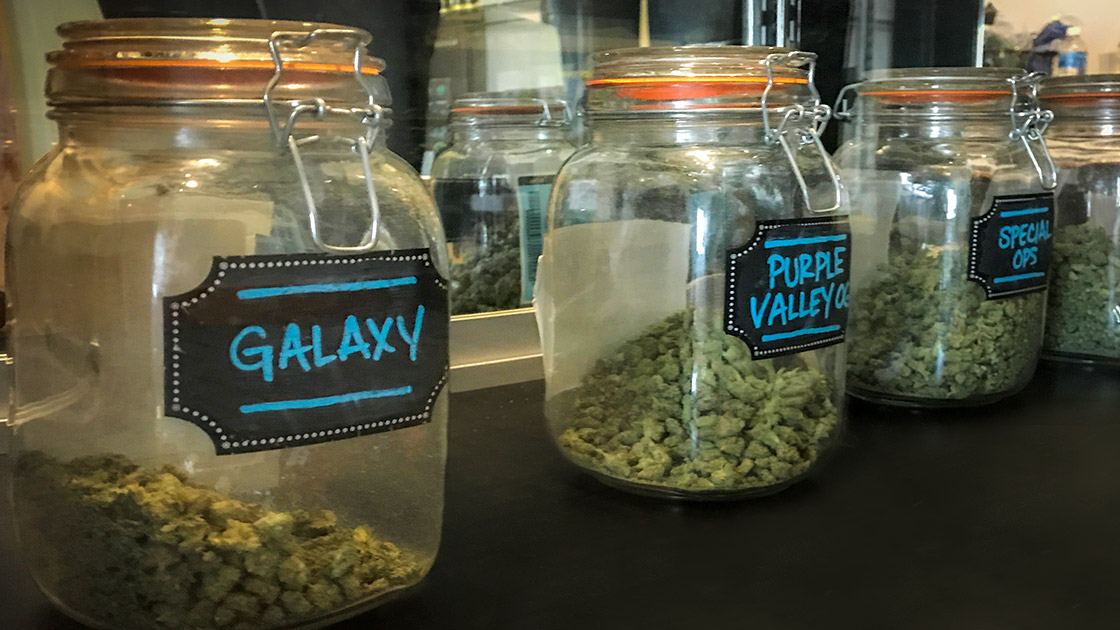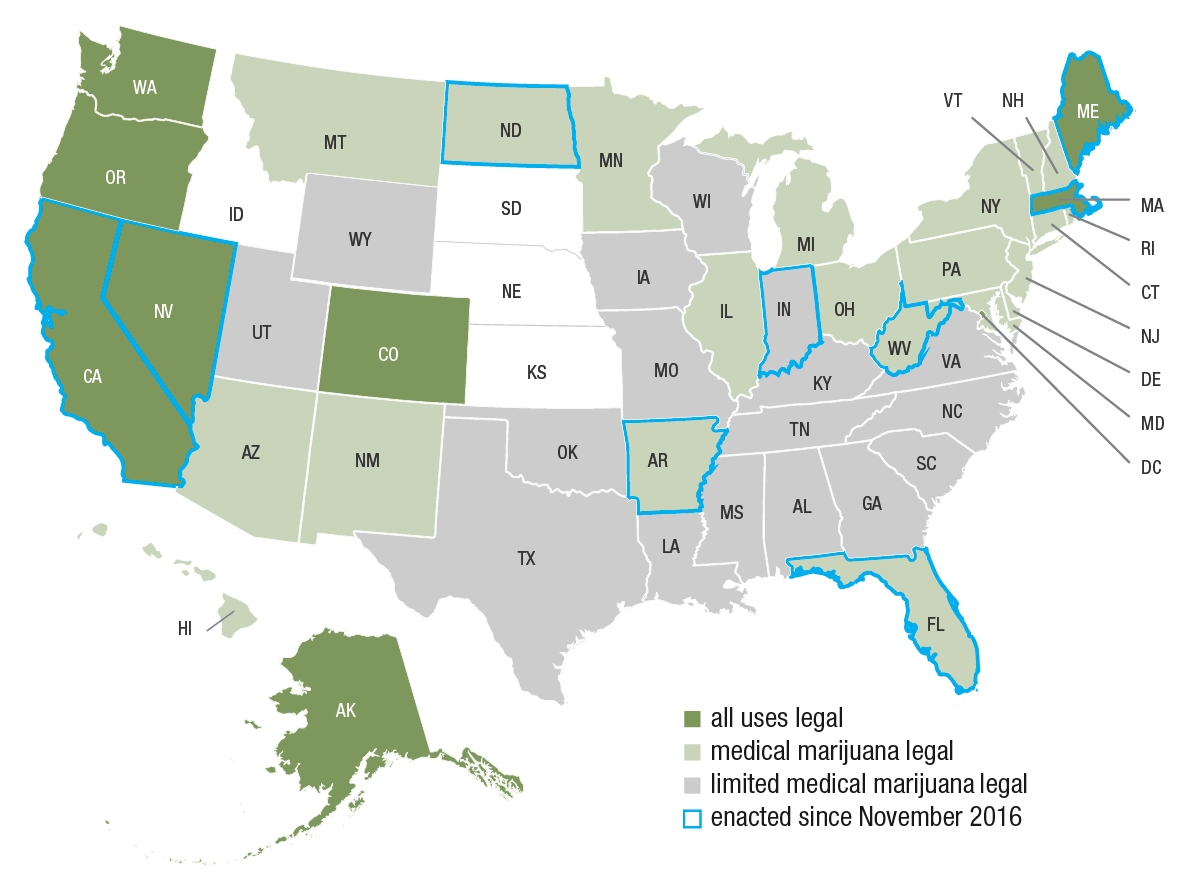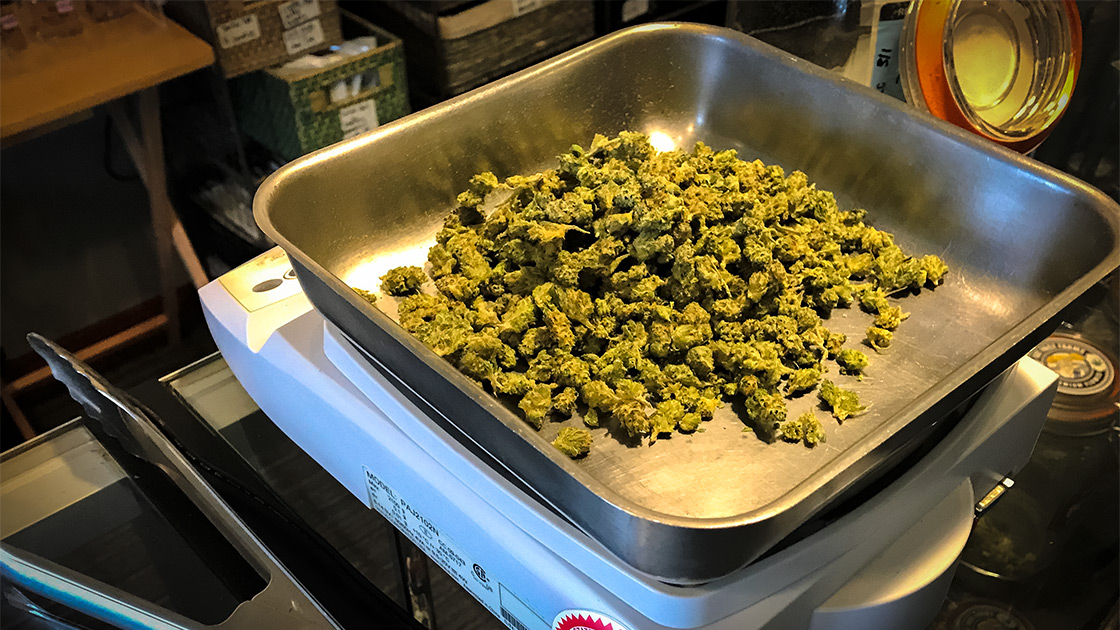Legalizing recreational marijuana is linked to increased crashes
June 22, 2017

Legalizing recreational marijuana use in Colorado, Oregon and Washington has resulted in collision claim frequencies that are about 3 percent higher overall than would have been expected without legalization, a new Highway Loss Data Institute (HLDI) analysis shows. This is HLDI's first look at how the legalization of marijuana since 2014 has affected crashes reported to insurers.
More drivers admit to using marijuana, and it is showing up more frequently among people involved in crashes. Though there is evidence from simulator and on-road studies that marijuana can degrade some aspects of driving performance, researchers haven't been able to definitively connect marijuana use with more frequent real-world crashes. Some studies have found that using the drug could more than double crash risk, while others, including a large-scale federal case-control study, have failed to find a link between marijuana use and crashes. Studies on the effects of legalizing marijuana for medical use also have been inconclusive.
Colorado and Washington were the first to legalize recreational marijuana for adults 21 and older with voter approval in November 2012. Retail sales began in January 2014 in Colorado and in July 2014 in Washington. Oregon voters approved legalized recreational marijuana in November 2014, and sales started in October 2015.
HLDI conducted a combined analysis using neighboring states as additional controls to examine the collision claims experience of Colorado, Oregon and Washington before and after law changes. Control states included Idaho, Montana, Nevada, Utah and Wyoming, plus Colorado, Oregon and Washington prior to legalization of recreational use. During the study period, Nevada and Montana permitted medical use of marijuana, Wyoming and Utah allowed only limited use for medical purposes, and Idaho didn't permit any use. Oregon and Washington authorized medical marijuana use in 1998, and Colorado authorized it in 2000.
HLDI also looked at loss results for each state individually compared with loss results for adjacent states without legalized recreational marijuana use prior to November 2016. Data spanned collision claims filed between January 2012 and October 2016 for 1981 to 2017 model vehicles. Analysts controlled for differences in the rated driver population, insured vehicle fleet, the mix of urban versus rural exposure, unemployment, weather and seasonality.
Collision claims are the most frequent kind of claims insurers receive. Collision coverage insures against physical damage to a driver's vehicle in a crash with an object or other vehicle, generally when the driver is at fault. Collision claim frequency is the number of collision claims divided by the number of insured vehicle years (one vehicle insured for one year or two vehicles insured for six months each).
"The combined-state analysis shows that the first three states to legalize recreational marijuana have experienced more crashes," says Matt Moore, senior vice president of HLDI. "The individual state analyses suggest that the size of the effect varies by state."
Colorado saw the biggest estimated increase in claim frequency compared with its control states. After retail marijuana sales began in Colorado, the increase in collision claim frequency was 14 percent higher than in nearby Nebraska, Utah and Wyoming. Washington's estimated increase in claim frequency was 6.2 percent higher than in Montana and Idaho, and Oregon's estimated increase in claim frequency was 4.5 percent higher than in Idaho, Montana and Nevada.
"The combined effect for the three states was smaller but still significant at 3 percent," Moore says. "The combined analysis uses a bigger control group and is a good representation of the effect of marijuana legalization overall. The single-state analyses show how the effect differs by state."
Each of the individual state analyses also showed that the estimated effect of legalizing recreational use of marijuana varies depending on the comparison state examined. For example, results for Colorado vary from a 3 percent rise in claim frequency when compared with Wyoming to a 21 percent increase when compared with Utah.
HLDI's new analysis of real-world crashes provides one look at the emerging picture of what marijuana's legalization will mean for highway safety as more states decriminalize its use. In the coming years, more research from HLDI and others will help sharpen the focus. As HLDI continues to examine insurance claims in states that allow recreational use of marijuana, IIHS has begun a large-scale case-control study in Oregon to assess how legalized marijuana use may be changing the risk of crashes with injuries. Preliminary results are expected in 2020.
In addition to Colorado, Oregon and Washington, five other states and Washington, D.C., have legalized marijuana for all uses, and 21 states have comprehensive medical marijuana programs as of June. An additional 17 states permit limited access for medical use. Marijuana is still an illegal controlled substance under federal law.
Collision claims
Estimated effects of recreational marijuana sales in 3 states
Change in claim frequency for vehicles up to 33 years old, 2012-16
Colorado saw the biggest estimated increase in claim frequency compared with its control states. The combined effect for the three states was smaller but still significant at 3 percent. The combined-state analysis is a good representation of the effect of marijuana legalization overall, while the single-state analyses show how the effect can vary from state to state.
Key dates for laws in study states
Colorado was first with retail sales of recreational marijuana
| Colorado | Washington | Oregon | |
|---|---|---|---|
| Vote | November 2012 | November 2012 | November 2014 |
| Retail sales | January 2014 | July 2014 | October 2015 |
U.S. marijuana laws
States with some form of legalized marijuana use as of June 2017

The business of pot
Marijuana is a booming business in states where its use is legal. Retail sales of recreational marijuana in the U.S. hit $1.8 billion in 2016, led by Colorado and Washington, and are expected to grow to $2.6 billion to $2.9 billion in 2017, Marijuana Business Daily reports in its 2017 Marijuana Business Factbook. Colorado has reaped a nearly fivefold increase in tax revenue from retail sales of recreational marijuana since January 2014, an analysis of Colorado Department of Revenue data indicates.
Tourism is just one driver of state economies, and for pot-friendly locales, access to legalized marijuana is promoted as another reason to visit. A "Colorado marijuana tourism map" from Kush Tourism, for instance, touts the state's allure as a destination for "breathtaking mountain views, unparalleled outdoor recreation, and now high-quality legal cannabis!"
In 2015, 7 percent of tourists older than age 25 who visited Colorado cited a marijuana dispensary as a top reason for their trip, the Colorado Tourism Office reported. A year later, 4 percent of tourists surveyed cited that reason. The novelty of legalized marijuana may have drawn younger adult travelers in 2015, but visitor demographics returned to a more traditional pattern in 2016, the tourism office said.

A new tourism industry has sprouted around legalized use of marijuana. A trip to a dispensary has been cited by some tourists as a top reason to visit Colorado.
Mixed research on risk
As marijuana has won at the ballot box, public health officials, safety advocates and citizens have questioned the negative impact legalization might have on the road if stoned drivers were at the wheel. A 2016 IIHS survey found that drivers in Colorado, Oregon and Washington were more likely to view marijuana as a highway safety problem than drivers in states without legalized use.
"Worry that legalized marijuana is increasing crash rates isn't misplaced," says David Zuby, IIHS executive vice president and chief research officer. "HLDI's findings on the early experience of Colorado, Oregon and Washington should give other states eyeing legalization pause."
Consuming THC just prior to driving has been shown to increase reaction time and impair distance estimation and lane tracking in both simulator and on-road studies. THC, or tetrahydrocannabinol, is the psychoactive substance in marijuana. A recent study conducted using the National Advanced Driving Simulator found that drivers under the influence of marijuana had trouble maintaining constant lane position, but they tended to drive more slowly and with more headway than drivers not under the influence.
Due to a combination of factors, marijuana's role in crashes is hazier than the data on alcohol. Many states don't include consistent information on driver drug use in crash reports that the Fatality Analysis Reporting System (FARS) database aggregates, and policies and procedures for drug testing are inconsistent. More drivers in crashes are tested for alcohol than for drugs. When drivers are tested, other drugs are often found in combination with alcohol, which makes it difficult to isolate their separate effects.
What is more, unlike alcohol, experts don't agree on how much marijuana must be consumed for a driver to be impaired. A positive test for THC and its active metabolite doesn't mean the driver was impaired at the time of the crash. Habitual users of marijuana may have positive blood tests for THC days to weeks after using the drug.

Marijuana-positive drivers
About 1 in 5 weekend nighttime drivers tested positive for at least one legal or illegal drug in the 2013-14 National Roadside Survey of Alcohol and Drug Use by Drivers conducted by the National Highway Traffic Safety Administration (NHTSA) (see "More drivers use marijuana, but link to crashes is murky," May 12, 2015). Marijuana was much more prevalent than in a prior roadside survey. Nearly 13 percent of weekend nighttime drivers tested positive for marijuana use, compared with 8.6 percent in 2007.
A handful of studies have examined the prevalence of marijuana among crash-involved drivers in Washington since legalization. An AAA Foundation study published in 2016 estimated that the prevalence of drivers in fatal crashes with detectable THC in their blood roughly doubled from 8.3 percent in 2013 to 17 percent in 2014.
The authors note that it isn't clear whether the upward trend was due to legalization or other factors. They caution that "results of this study do not indicate that drivers with detectable THC in their blood at the time of the crash were necessarily impaired by THC or that they were at-fault for the crash" and that the FARS data used in the study "are very limited with respect to toxicology results related to marijuana."
A Pacific Institute for Research and Evaluation (PIRE) study, published last year and sponsored by NHTSA and partially funded by IIHS, collected roadside data from drivers in three waves: before legal sales began, about six months afterward and again a year later. The researchers found that more drivers were THC-positive after one year of retail sales than just before sales began in the state.
Of the nearly 2,400 participants who provided oral fluid or blood samples, 15 percent of drivers were THC-positive in Wave 1, 19 percent were THC-positive in Wave 2 and 21 percent were positive in Wave 3. However, the differences weren't statistically significant. Separating the results by time of day, the researchers found a statistically significant increase in the daytime prevalence of THC-positive drivers between waves. The prevalence increased from 7.8 percent of daytime drivers in Wave 1 to 18 percent in Wave 2 and 19 percent in Wave 3. The prevalence also increased among nighttime drivers with each successive wave, but the increases weren't statistically significant.
The study didn't "address whether an increased prevalence of THC-positive drivers is related to greater impairment among drivers or greater crash risk," the PIRE researchers cautioned.
A NHTSA-sponsored case-control study by PIRE examined the crash risk associated with driver drug use and found that drivers who tested positive for marijuana were overrepresented in the crash-involved population. When the researchers controlled for driver demographics and alcohol use, however, they found no link between marijuana use and driver crash risk. Published in 2016, the study included 2011-12 data on drivers involved in police-reported crashes in Virginia Beach, Virginia, where it is illegal to use marijuana.
A 2016 study by researchers at Columbia University examined traffic fatalities in 19 states before and after enacting medical marijuana laws. Although on average there was an 11 percent reduction in fatality rates, the results varied across states. Seven states saw a reduction in fatalities, while two had an increase, and the other 10 didn't change.